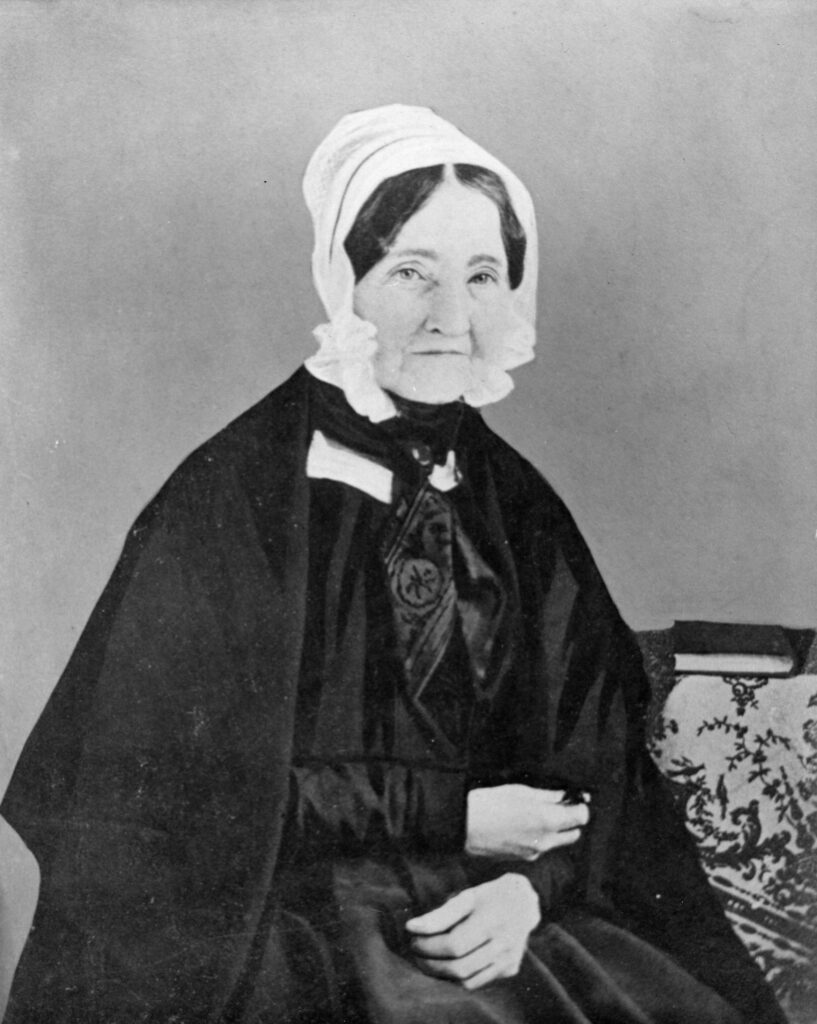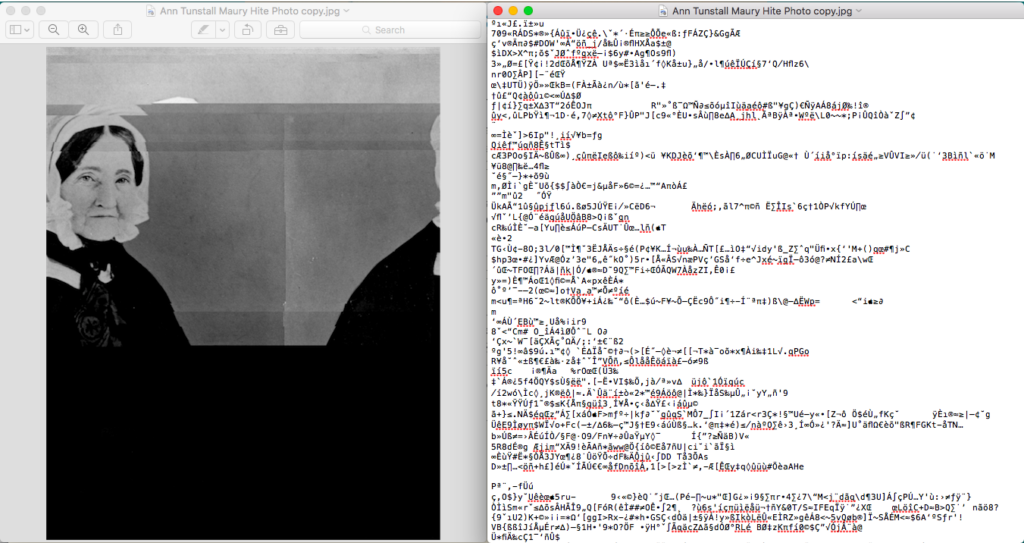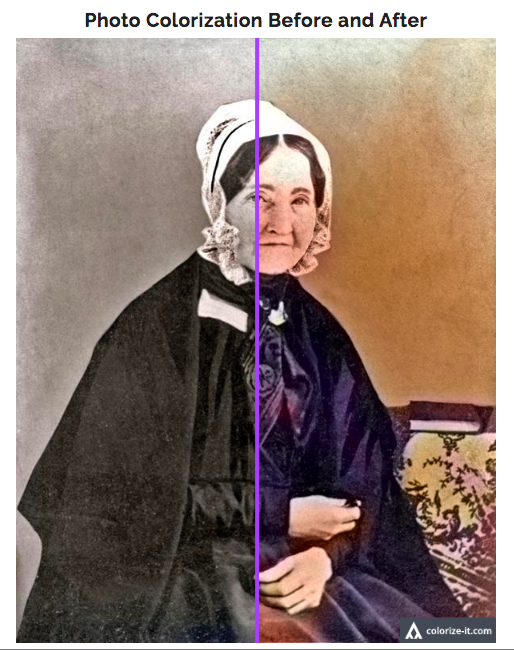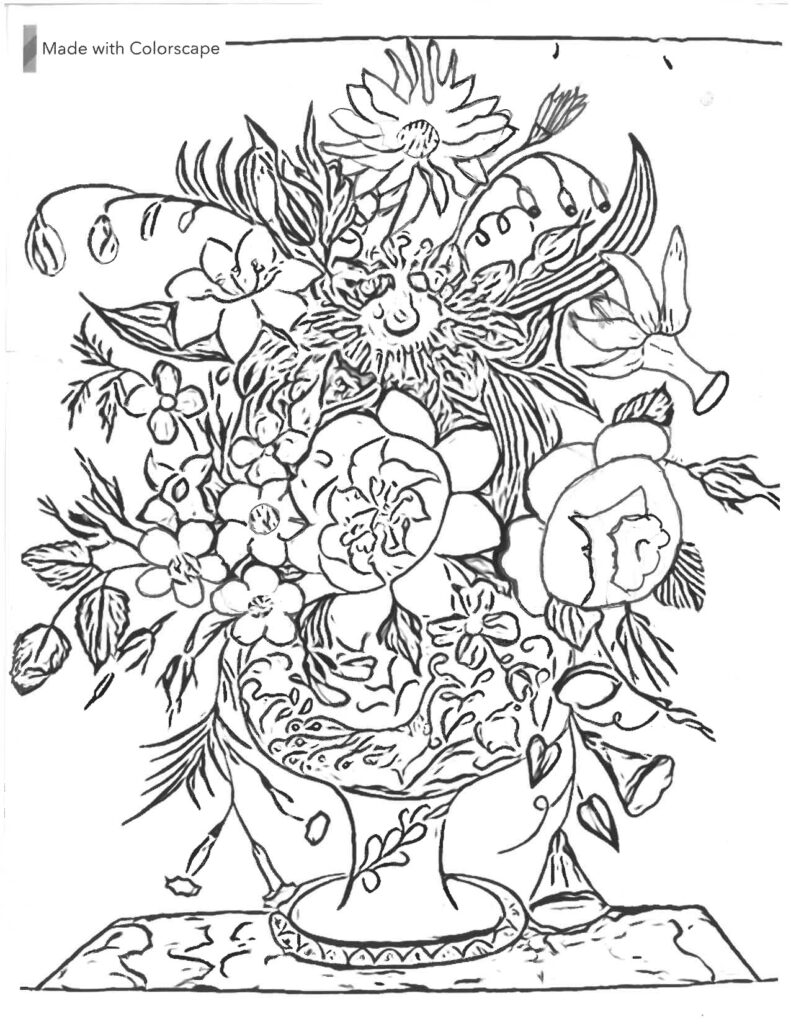What does a photograph really tell you?
Audience
High School Students
Objective
Dig beyond the surface to see an image from a new perspective
Background
This is the only photograph ever taken of Mrs. Hite in 1851 when she was 68-years-old. By changing the code and distorting the photograph digitally, we’re able to analyze and interpret history through a new lens.
Activity

Part 1: Observe the superficial
Write down your first impressions and observations of the photograph.
Part 2: Glitch the photograph
- Save Mrs. Hite’s photograph to your computer:
a. Right-click Mrs. Hite’s image.
b. Click Save Image As.
c. Save the image to your computer (like your desktop). - Navigate to the saved image on your computer and make a copy:
a. Right-click the original image.
b. Select Duplicate. - Start glitching:
a. Open the duplicated image.
b. Navigate back to the saved duplicated image on your computer.
c. Right-click the duplicated image file.
d. Select Open With >> TextEdit.
e. Align the open duplicated image and the TextEdit file side-by-side.
f. Start removing code from the TextEdit file, saving as you go. As you save the TextEdit file, the open image updates in real time.
Part 3: Analyze the glitched photo
As you did in Part 1, write down your observations. What’s different in your glitched photograph? Has anything disappeared, become distorted, stand out from the original?
For example, in the sample glitched photograph of Mrs. Hite, her face seems to be front and center, particularly highlighting her eyes.


Part 4: Color the photo (optional)
Ever wonder what a black and white photograph may have looked like in color? Now’s your chance!
- Go to Algorithmia.
- Paste the following link in the “Colorize a photo” box:
https://bellegrove.org/images/uploads/AnnMaury.jpg - Click the COLORIZE IT button.
- Once the application generates a color version of the photograph, you can slide the purple horizontal slider to the left and right to see the colored version against the original black and white version.
- What do you see now? Has your perspective on the photograph changed at all? If so, how?
What’s theorem painting?

Audience
Elementary, Middle, and High School students
Background
Theorem paintings were a popular art form between 1830 and 1850 that utilized stencils to paint on linen and velvet. As a wealthy woman of leisure, particularly once her children were grown, Mrs. Hite engaged in theorem painting, such as her 1849 painting of a vase of flowers, which was a popular stencil, along with fruit.
Colonial Williamsburg has a brief introductory video on theorem painting, too.
Activity
Print and color the black and white copy of Mrs. Hite’s painting.
What perspective are we missing from Mrs. Hite’s narrative?
Audience
High School Students
Objective
Strengthen historical thinking skills
Background
Shenandoah Center for Immersive Learning (SCIL) created this video that gives an interpretive period tour of Belle Grove Manor, narrated from Mrs. Ann Hite’s perspective, with particular attention given to the enslaved experience on the plantation.
Activity
The biggest goal with this activity is to ask questions and try to uncover unheard voices in Mrs. Hite’s narrative.
Here are some questions to help you get started:
- What’s the tone of the video?
- What do you think is historically accurate?
- What liberties do you think that the creators took with Mrs. Hite’s narrative?
- Do you think that Mrs. Hite thought about what her enslaved workers thought? Whether they dreamt of freedom? Whether they worried about being sold?
- Do you think that Mrs. Hite considered herself a fair enslaver? Do you think that she thought she took care of them? What do you think the enslaved men and women thought?
- Are perspectives missing from the video? If so, whose and what do you think that they would say?
- Do you think that the video accurately portrays Major Hite? Why or why not?
What do you think of Mrs. Hite?
Audience
Middle and High School Students
Objective
Strengthen historical thinking skills
Background
Get to know Mrs. Hite, meet the enslaved men and women she controlled, and explore her letters.
Activity
Now that you’ve met Mrs. Hite, read about her life in her own words, and caught a glimpse into her world in the early 1800s:
- List three things that you have learned about her
- List three questions that you still have about her
- If you had a chance to go back in time and meet her, what do you think you would think of her? Do you think that you would you like her as a person? Are there things that make you unsure of her character?